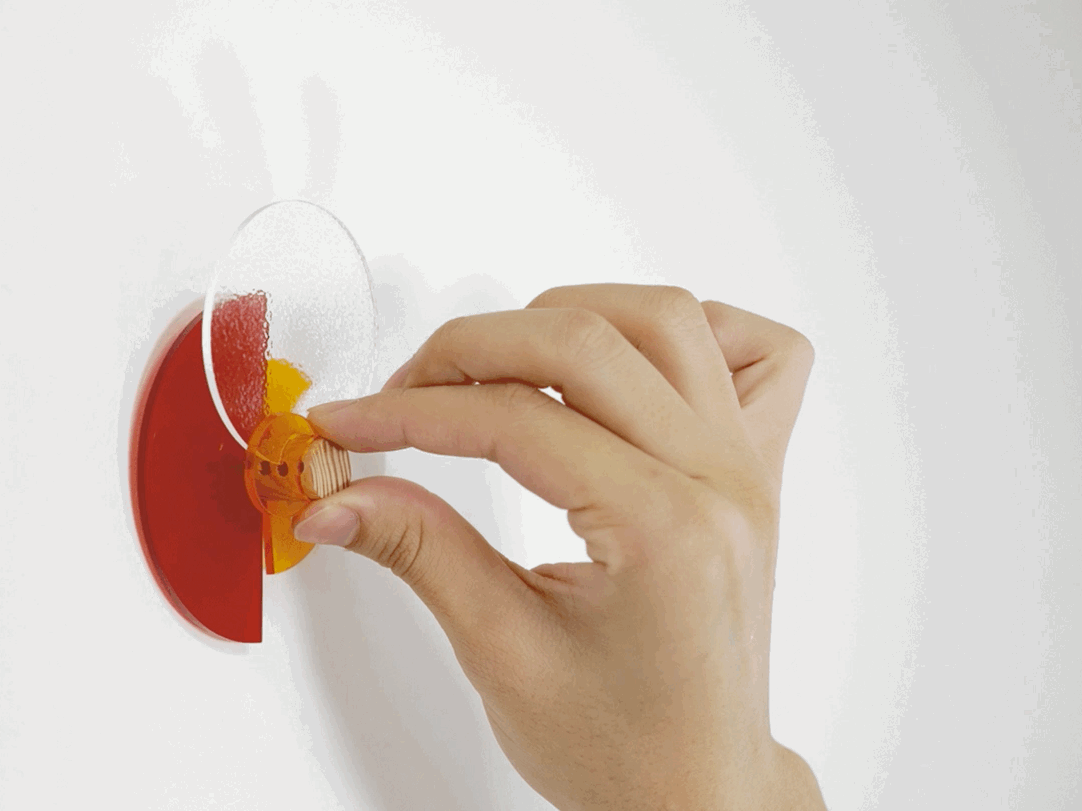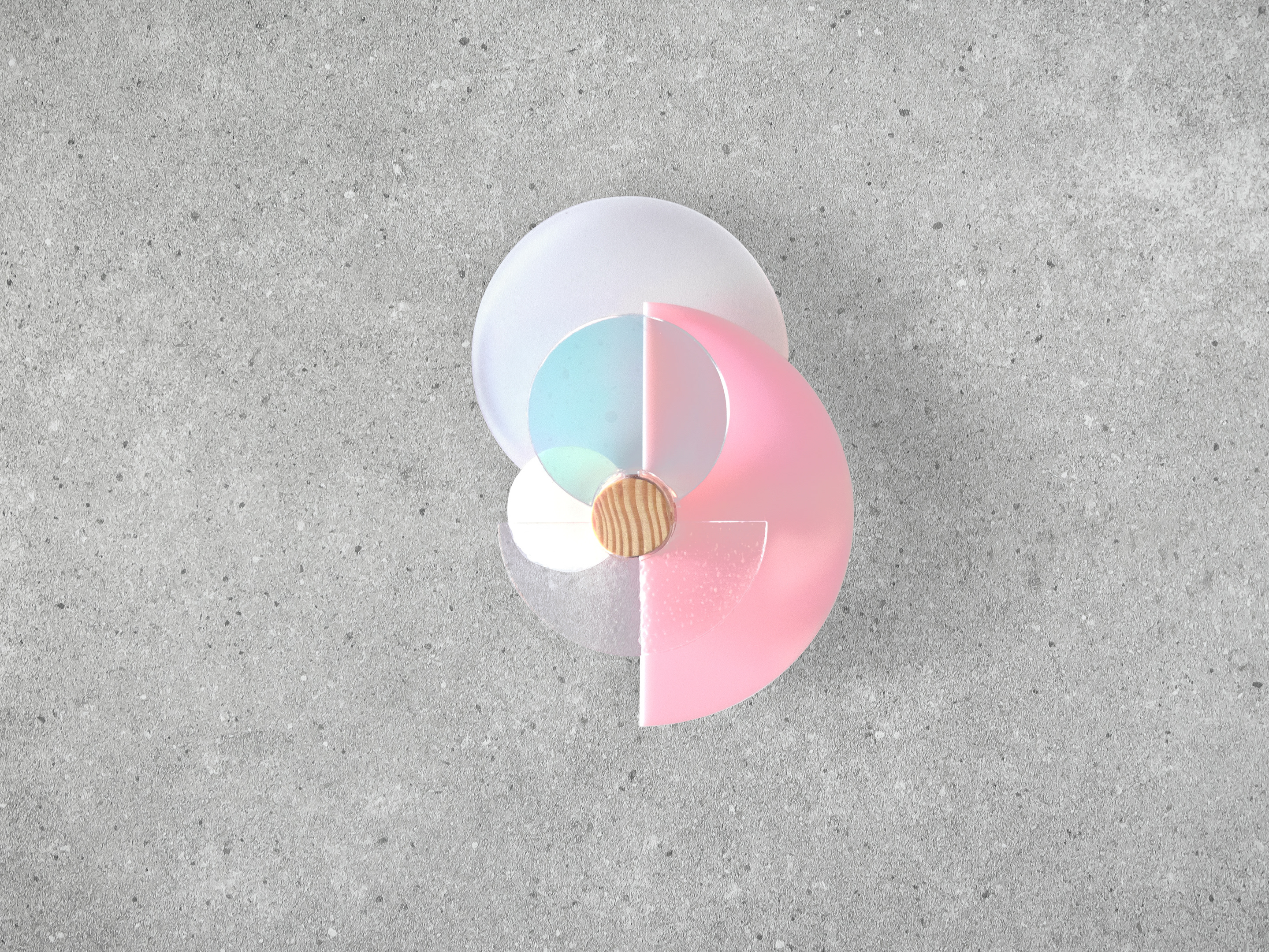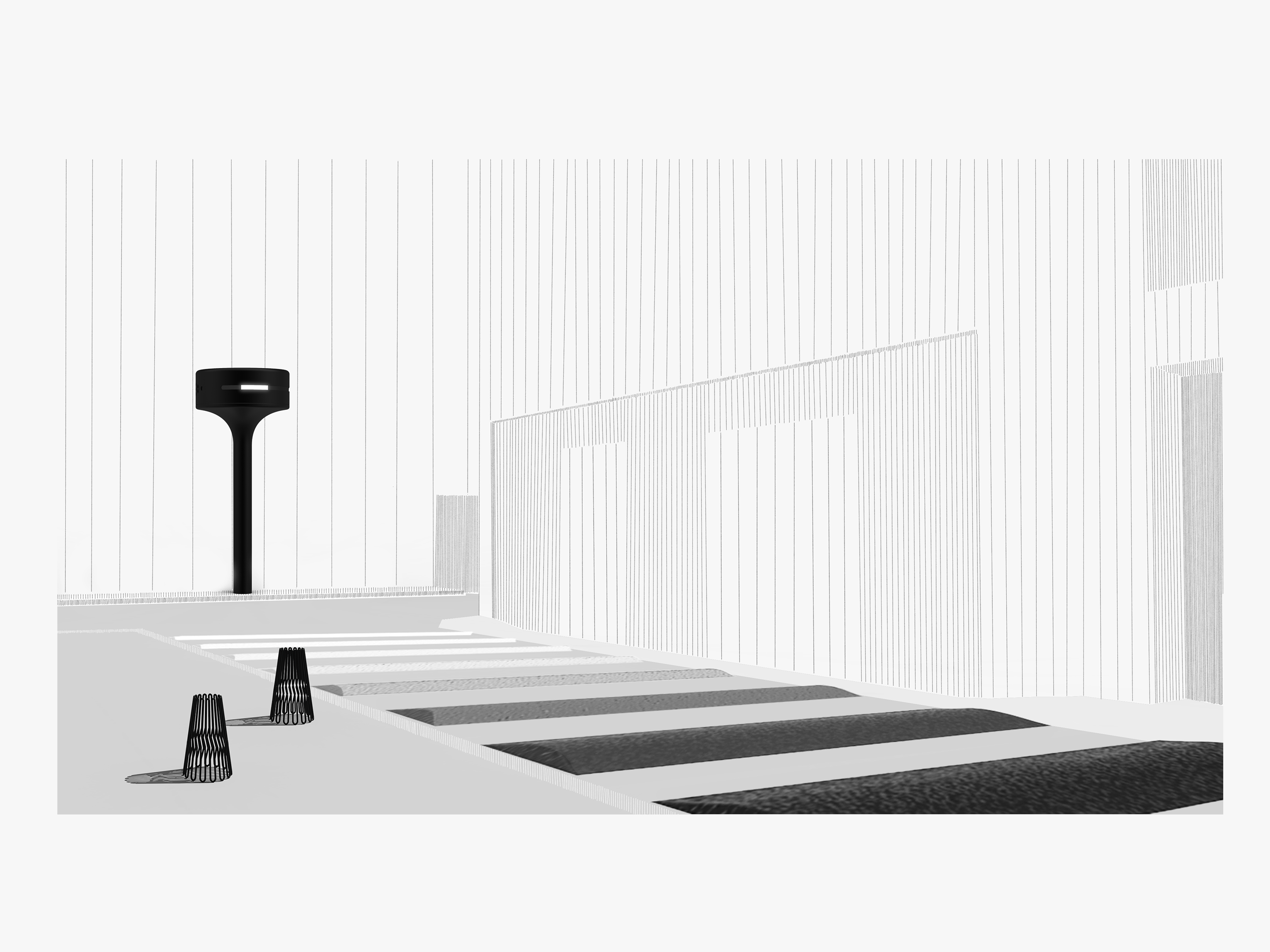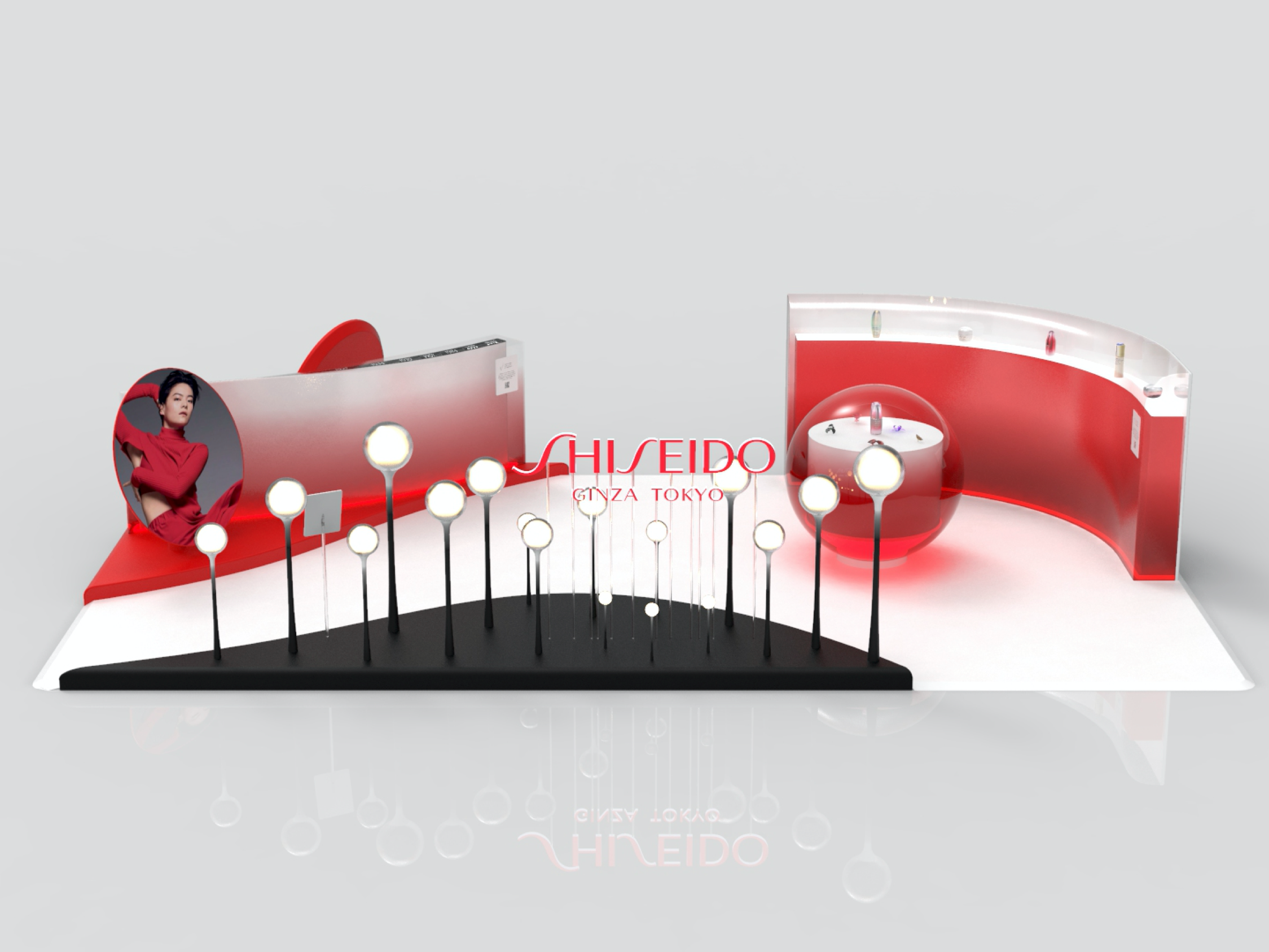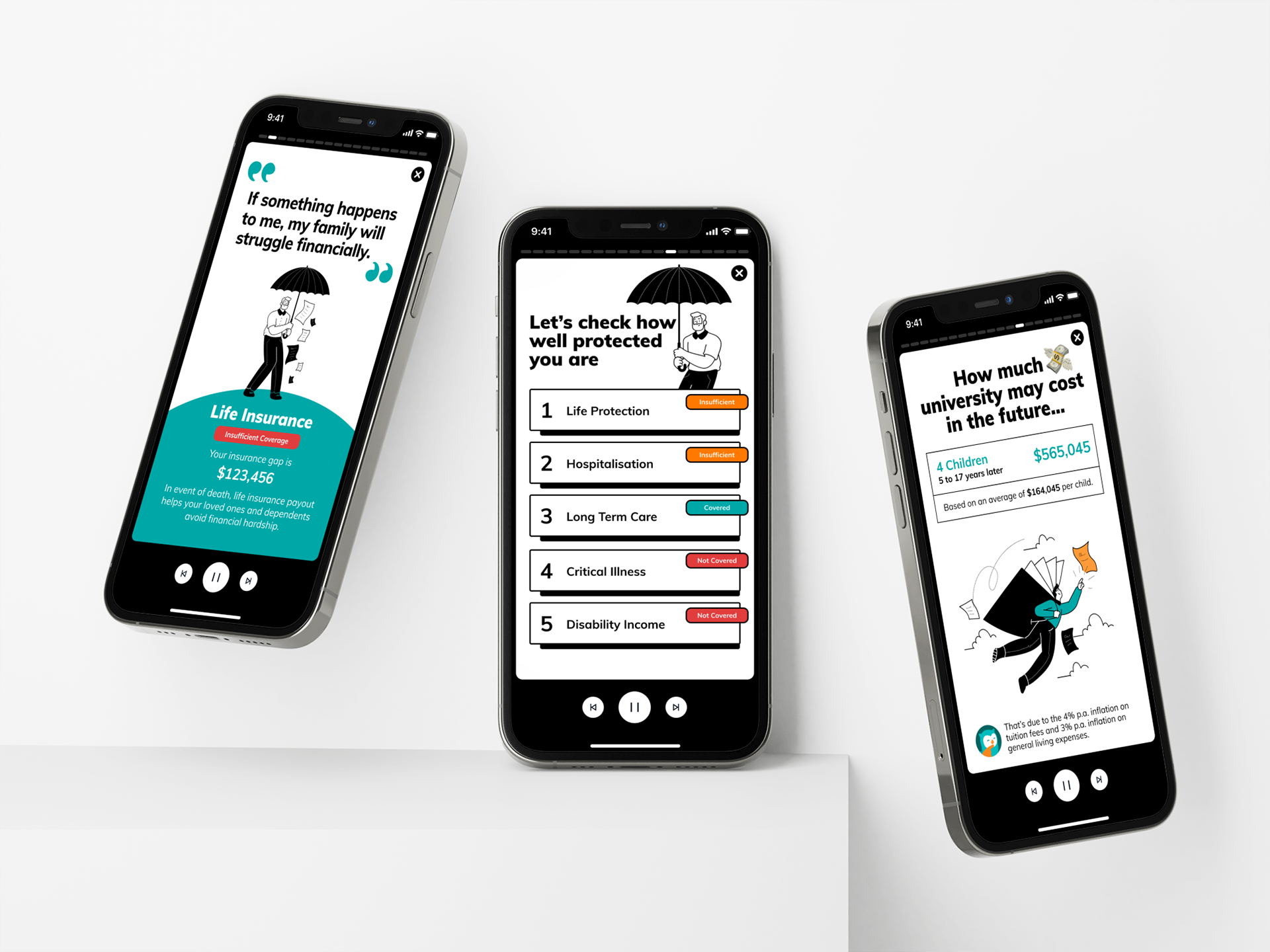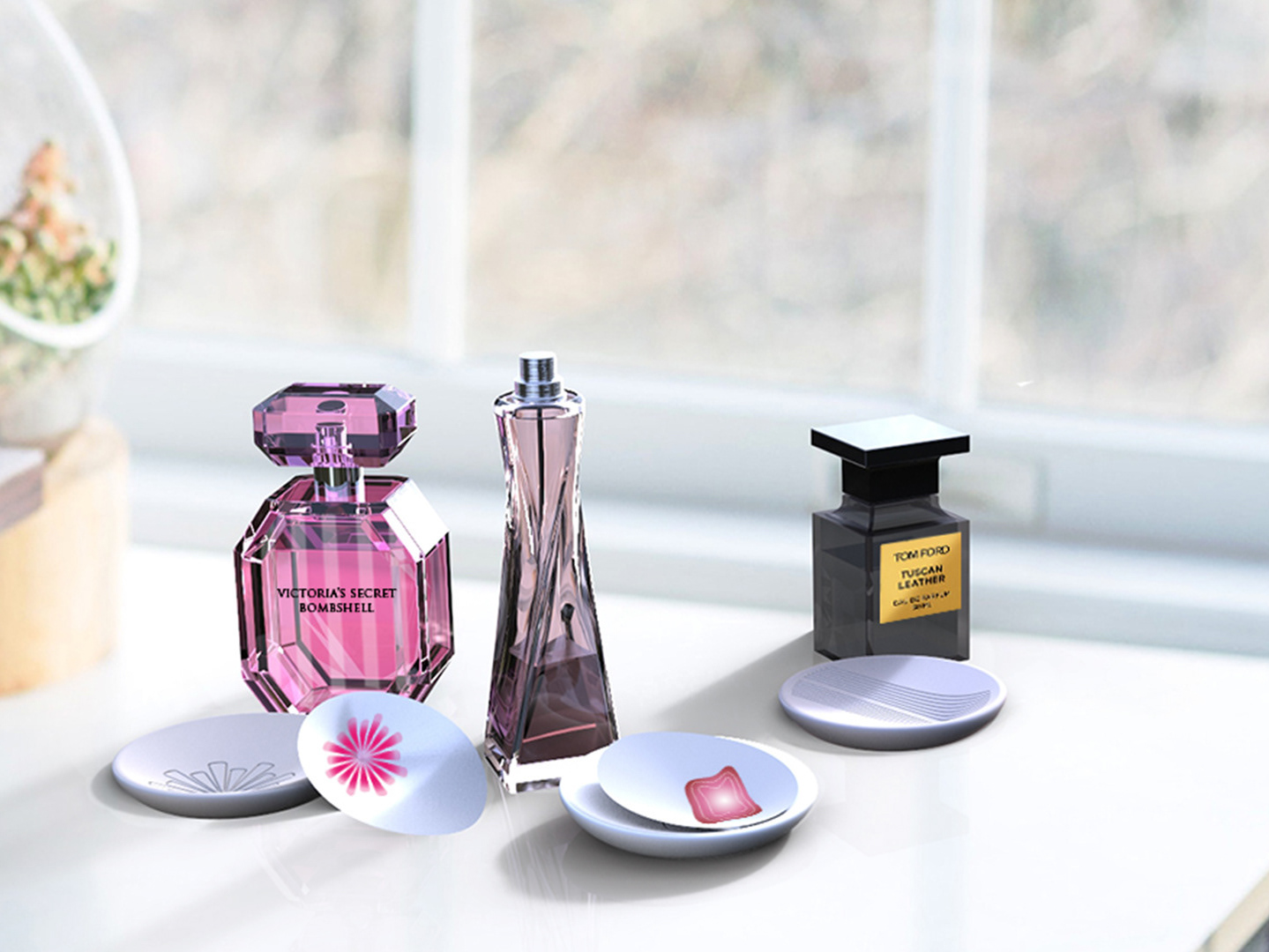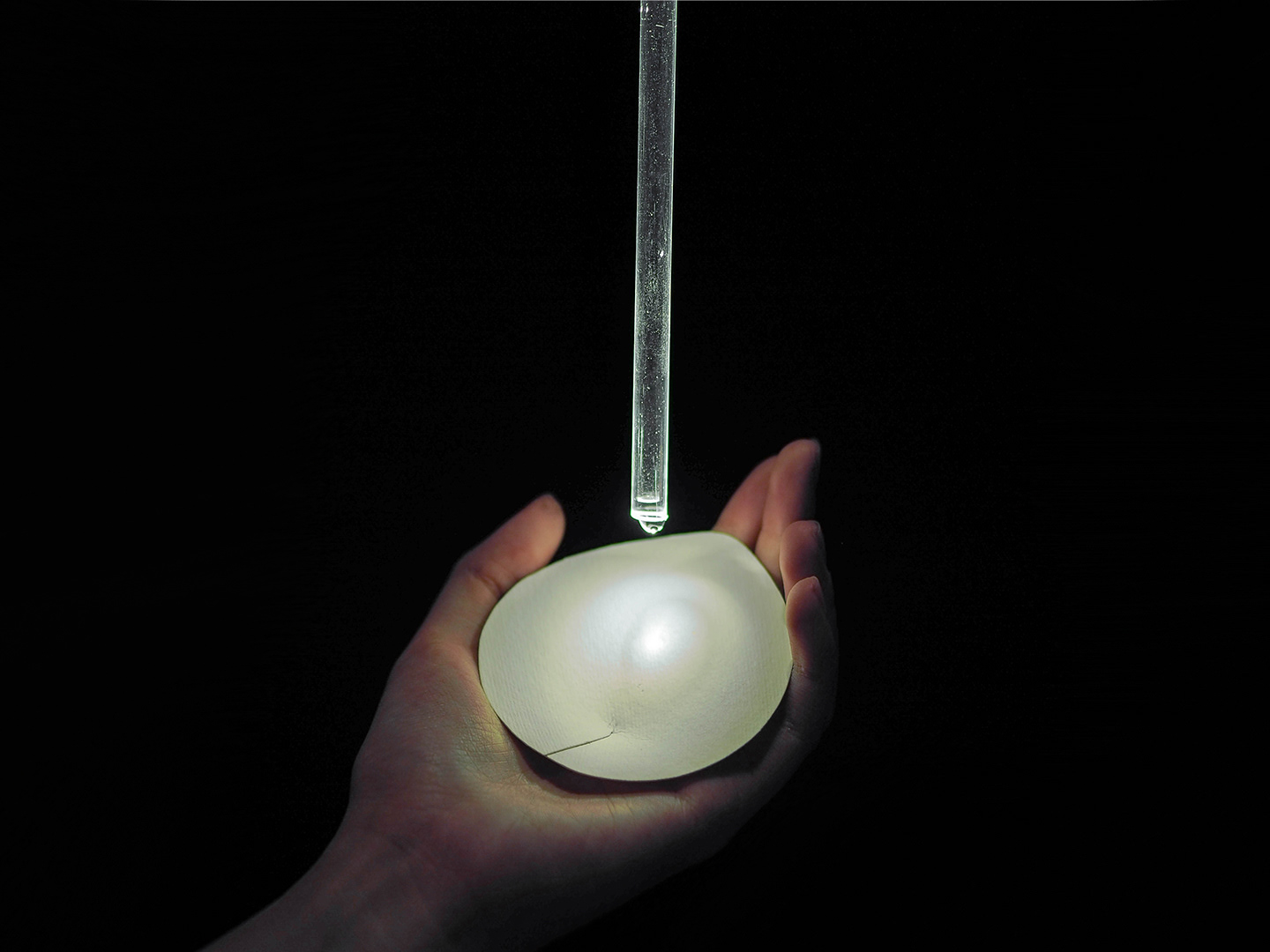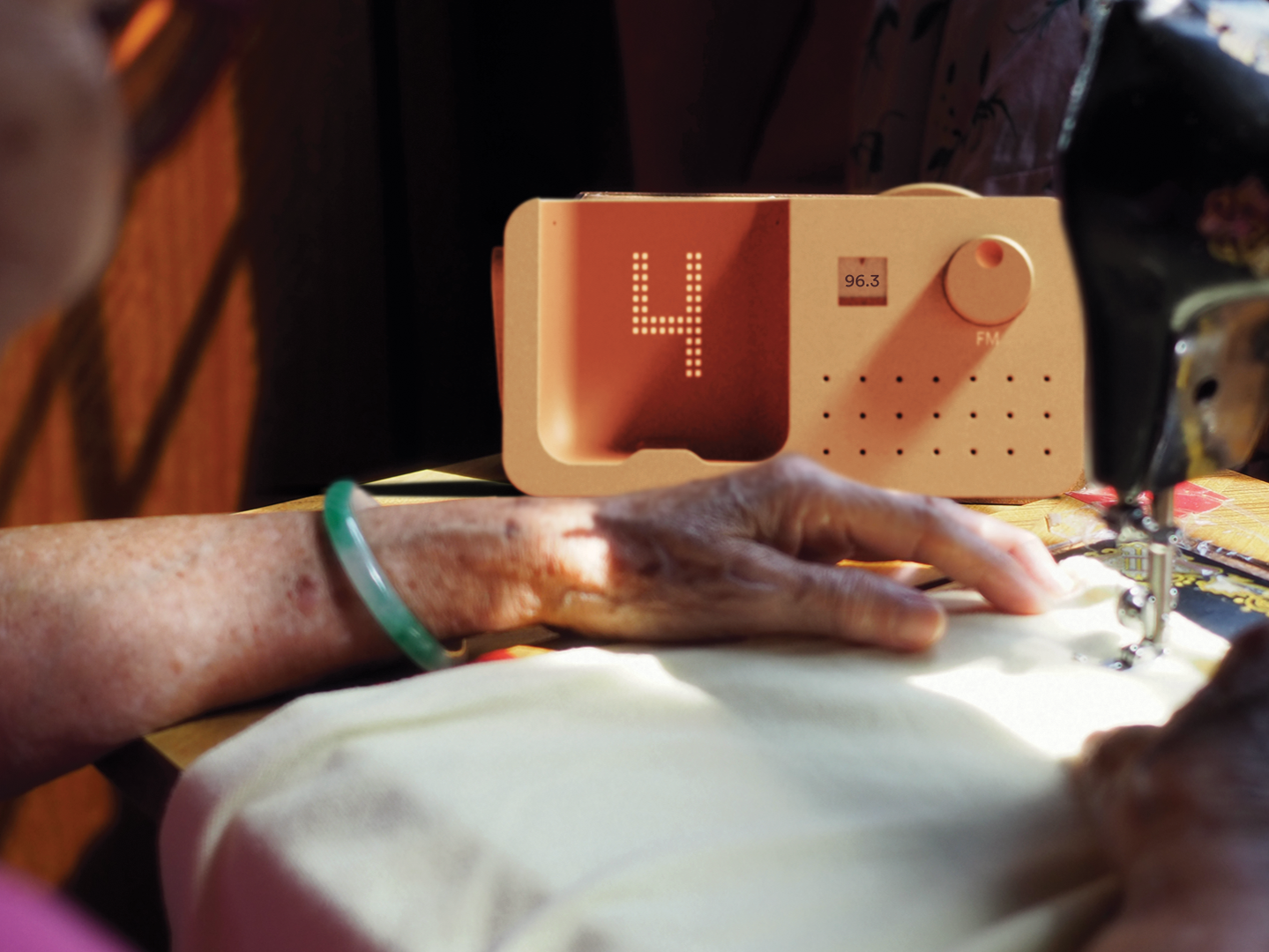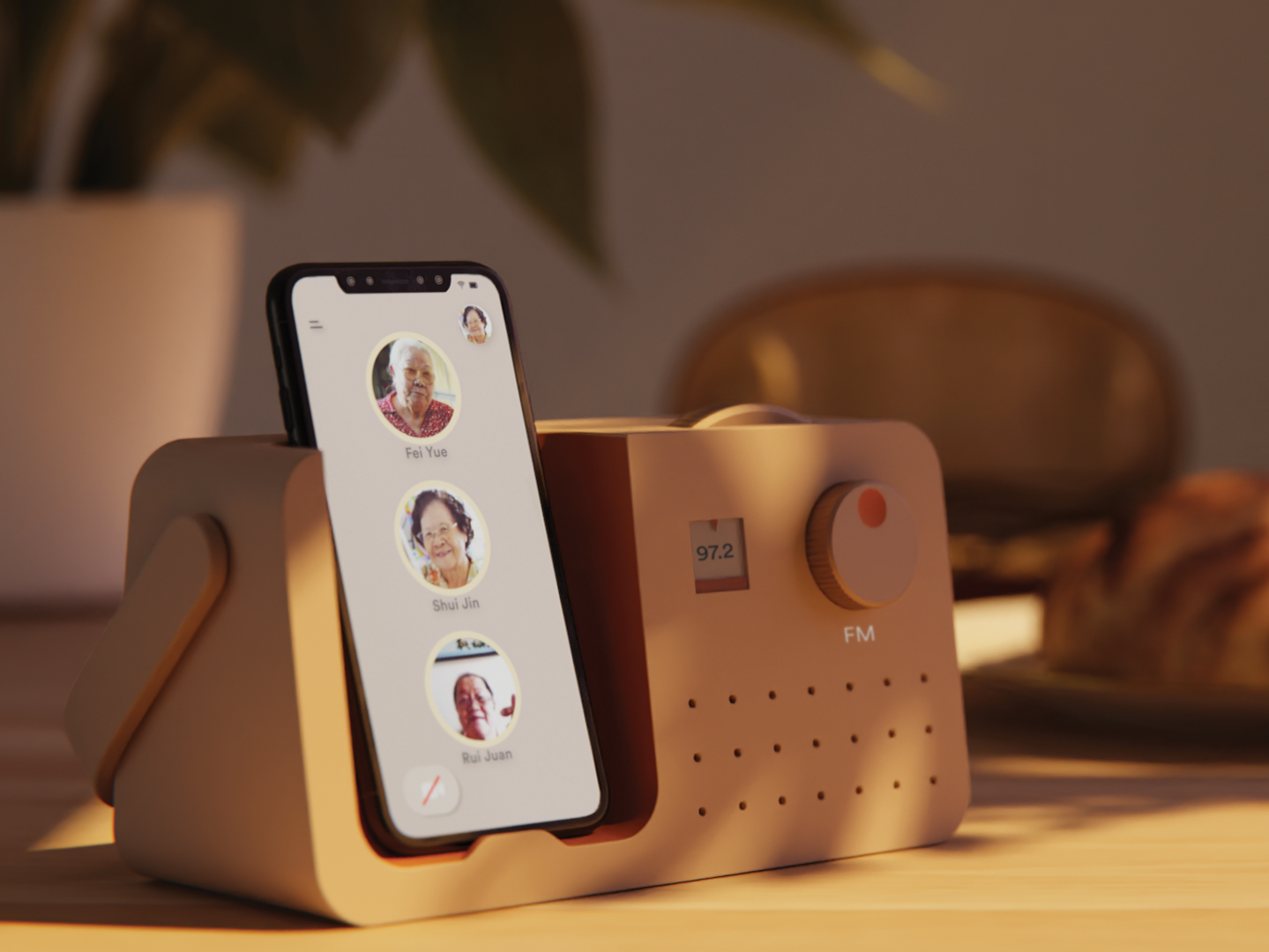About
This project, Loving Looks Like, aims to reframe End-Of-Life planning (EOL) positively into an act of care for oneself and your loved ones to induce responsibility to plan.
What is End-Of-Life Planning?
It is a set of processes that help to reduce the financial and emotional burden of a person's death, for both the person and their loved ones. These processes have to be completed early in a person's life in case of unforeseen circumstances of unconsciousness or cognitive instability.
Design Brief
In our partnership with GovTech Singapore, we were tasked with designing a solution
- To generate awareness among Singaporean citizens on End-Of-Life planning
- To help citizens make plans in an easy and straightforward way
- To support & enable the relevant people to execute citizens' plans when needed
UX Research
Existing Processes & Systems Around EOL Planning
We wanted to first understand what End-Of-Life planning was. The exact components often differed based on various resources for online. We collated the various processes, legal and informal, to better understand the recommended steps required to make EOL a smoother journey for all parties involved.
Preliminary Target Group
We narrowed down our target group to only include 40 to 60 year olds as this was the period where most adults were able to actualize planning with lesser risks and complications, and also the most neglected based on existing solutions and campaigns which were targetted more toward the elderly.
Understanding Users
Our user research process consisted of interviews, both general and in depth, synthesising of our insights and thereafter generating design opportunities based on insights gathered.
Preliminary Survey
We conducted a remote survey to persons of different ages, religions, races and socio-economic backgrounds to better understand perceptions and experiences with End-Of-Life Planning. We received responses from 115 respondents, with 74 of them aged 40-60 years old.
In-depth Interviews
Following the survey, we extracted interesting responses and trends, contacting certain respondents to conduct interviews to understand the reasons, thought processes and feelings behind their responses.
We conducted 9 face-to-face interviews in total with participants ranging in age, race, religion, marriage status and socio-economic background.
Affinity Mapping
Thereafter, we did Affinity Mapping to extract key points and grouped them based on similarity and generated overarching teams from each group to find unexpected insights. These were further prioritised and grouped to attain our 4 key insights.
Our Key Insights
Insight 01
We found that planning for EOL is not normalised in Singapore even though most people are personally comfortable talking about their own death. This is because they have the misconception that other people are not comfortable having such conversations.
Insight 02
The term End-Of-Life has misleading and negative connotations that leads to avoidance of the topics itself. Many times people associate it with immediate death and might shun away from it.
Insight 03
General ignorance of what EOL is and its importance causes people to neglect planning for and executing the process.
Insight 04
Catalysts are needed to get people to take action - push (triggers) factors in the form of positive reinforcement and pull (motivations) factors in the form of fear induction. Instilling a sense of responsibility also helps to propel action.
Persona Profiles
Following our user research, we generated 4 key personas that we felt were representative of our target users needs, pain points, priorities and catalysts. We based them on their respective levels of motivation towards addressing End-Of-Life Planning. Each persona was made intentionally catchy to make them easily remembered and understood :)
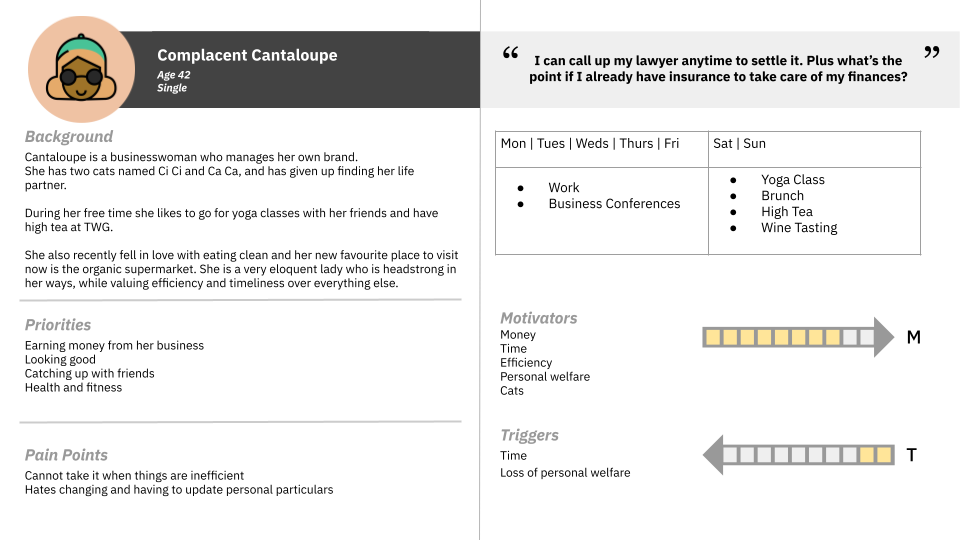

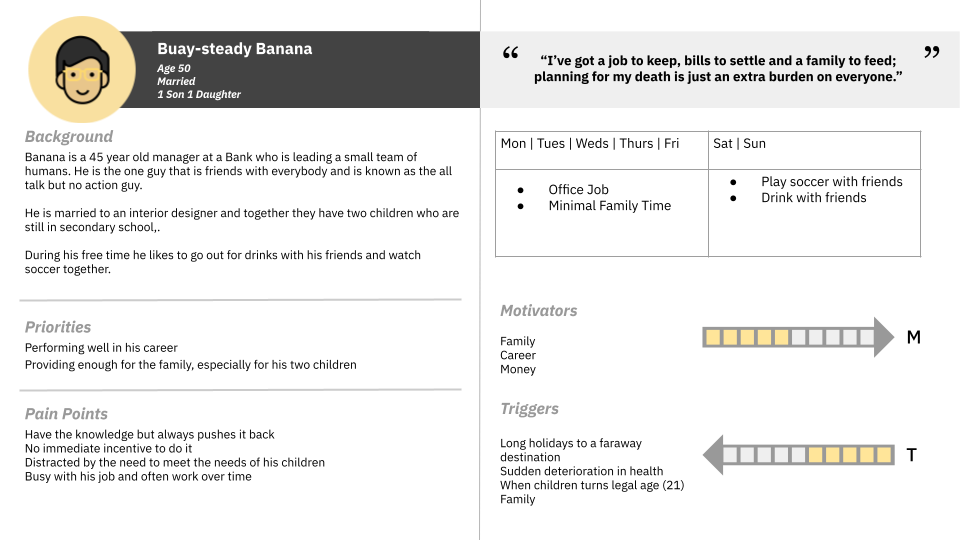
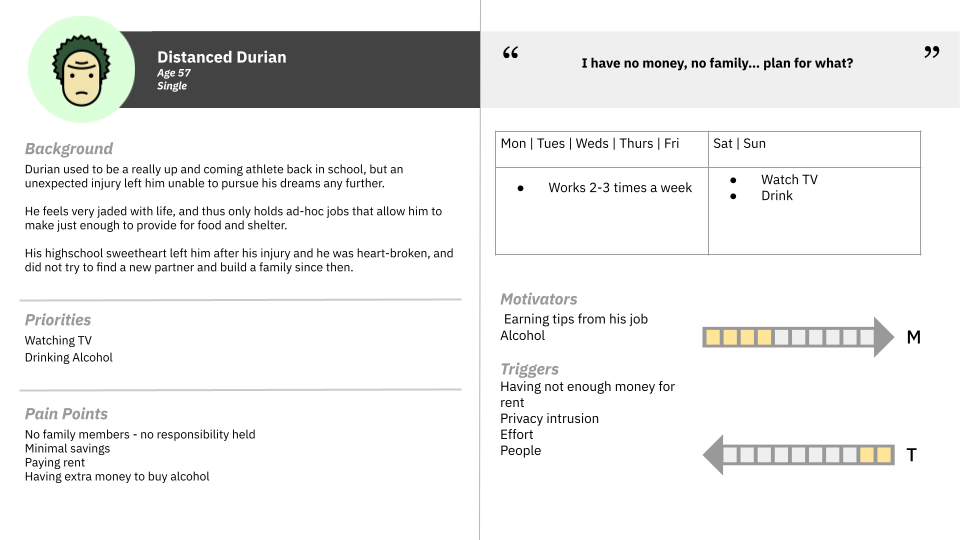
Primary target user
Personas were ranked based on importance and relevance in Singapore. Buay-steady Banana was deemed the most important group to tackle as the phenomenon of procrastination was the most prevalent in Singapore.
User Journey Map
As EOL planning is often not fully understood and done, our user journey follows Buay-steady Banana as he navigates the processes of EOL planning, from his first encounter with EOL to his death. The goal was to better understand how each relevant EOL component could have helped the user along each point in the journey.
Opportunity
Going back to our insights, we questioned ourselves to generate more design opportunities to come up with an overarching design statement.
Design Direction
To address this opportunity we defined, we decided on the approach of having a two-pronged strategy in order to achieve several goals:
Outreach
Goal : To increase awareness and normalize End-Of-Life planning
Approach : To reframe EOL planning to make it more approachable, light-hearted and less sombre
Actionable Information
Goal : To empowerment of Singaporeans to take action easily
Approach : To consolidate all relevant data, processes and resources into one common platform to support and guide users towards completing EOL planning
Design Criteria
Due to the unique sensitivity of the topic, UX goals were listed to scope the emotions we wanted our users to achieve at each stage to ensure a good user experience.
Solution characteristics
We further highlighted the differences and specific characteristics of each prong as a guide for our team so as to ideate and solution in the right direction.
The Solution
Loving Looks Like
After weeks of ideating, prototyping and testing, we redefined EOL planning as Loving Looks Like.
The concept acts as a positive trigger for Singaporeans to realize that End-Of-Life planning is also a way to love your loved ones.
The platform facilitates outreach through an interactive pamphlet and enables sharing of actionable information via an online mobile and web application.
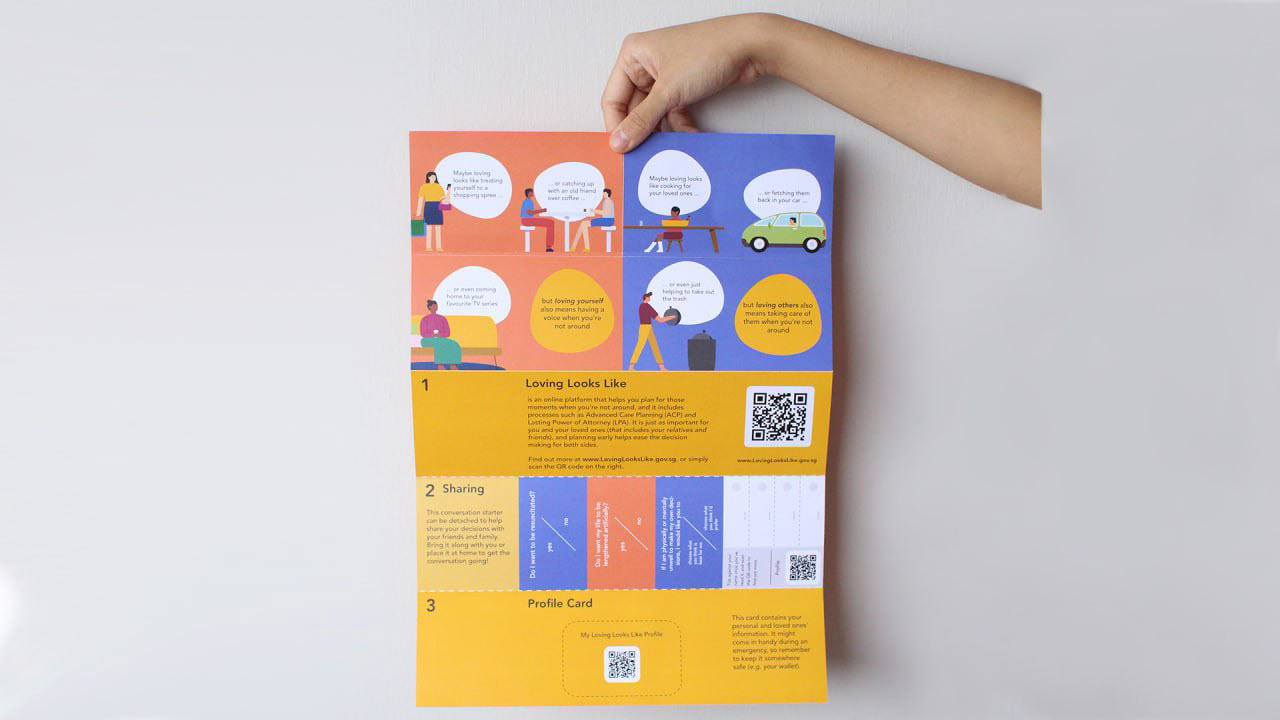

Service Blueprint
The solution raises awareness of the public, created opportunities for the user to discover, consider and eventually join the online platform. Through the online platform, the EOL planning can be executed in a seamless way, with multiple touch points for users to share information with loved ones.
Loving Looks Like: Outreach
The outreach component aims to open up the concept of death planning in Singapore, making it an everyday conversation.
Upon turning 55 years old, Singaporeans will receive the Loving Looks Like package in their mail. Upon opening, recipients will discover a folded pamphlet, gift wrapped with a printed ribbon.
Unfold 01: A Reflection
The pamphlet opens with an insightful prompt aimed at getting users to start reflecting on what loving looks like to themselves: What does loving look like to you?
Unfold 02: What does loving looks like?
The second unfolding lets the user understand why EOL planning is both an act of loving yourself and your loved ones through the drawing of likeness to other acts of love.
Users are greeted with 2 categories of how loving might look like: Taking care of myself and taking care of my loved ones. The pink and blue flaps can each open to reveal illustrated examples of their respective labels.


Taking care of myself :
To get the user to resonate with and acknowledge familiar examples of things people do as acts of care for themselves. It's emphasized how you can love yourself by doing EOL planning: by having a voice when you're not around.
Taking care of my loved ones :
In Asian culture, showing love through verbal means is less common as opposed to acts of care. Common yet often overlooked acts of care for loved ones are shown to remind readers that there are other ways to show your care for your loved ones, like taking care of them when you're not around.

Taking care of myself
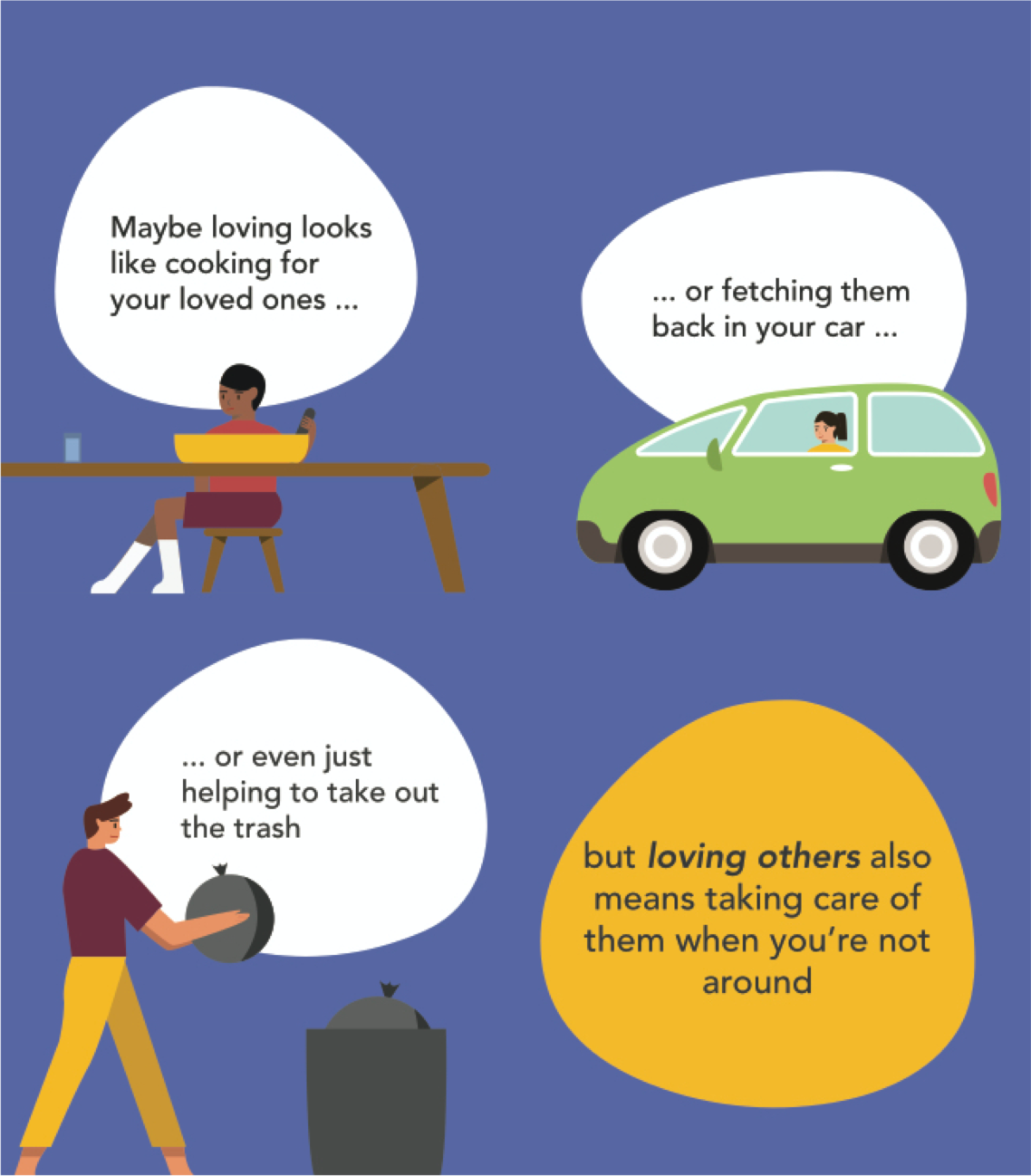
Taking care of my loved ones
Loving Looks Like: Actionable Information
Unfold 03: Online Platform (Step 1)
Accessible and Actionable: Users are onboarded with a brief introduction of the one-stop digital platform which guides users through their decision-making process, while encompassing information on end-of-life planning.
Upon scanning, users are brought through a friendly chat-like onboarding process that lets them feel like they are conversing with a real person. The next best action is recommended based on the user's inputs.
If the user accepts the recommendation, they are brought through a simplified tutorial before being introduced to their Personal Planner, where individuals can plan their ACP, LPA, CPF & Wills among other things. It allows them to answer difficult yet relevant questions privately at their own pace, and enables sharing with loved ones once completed.

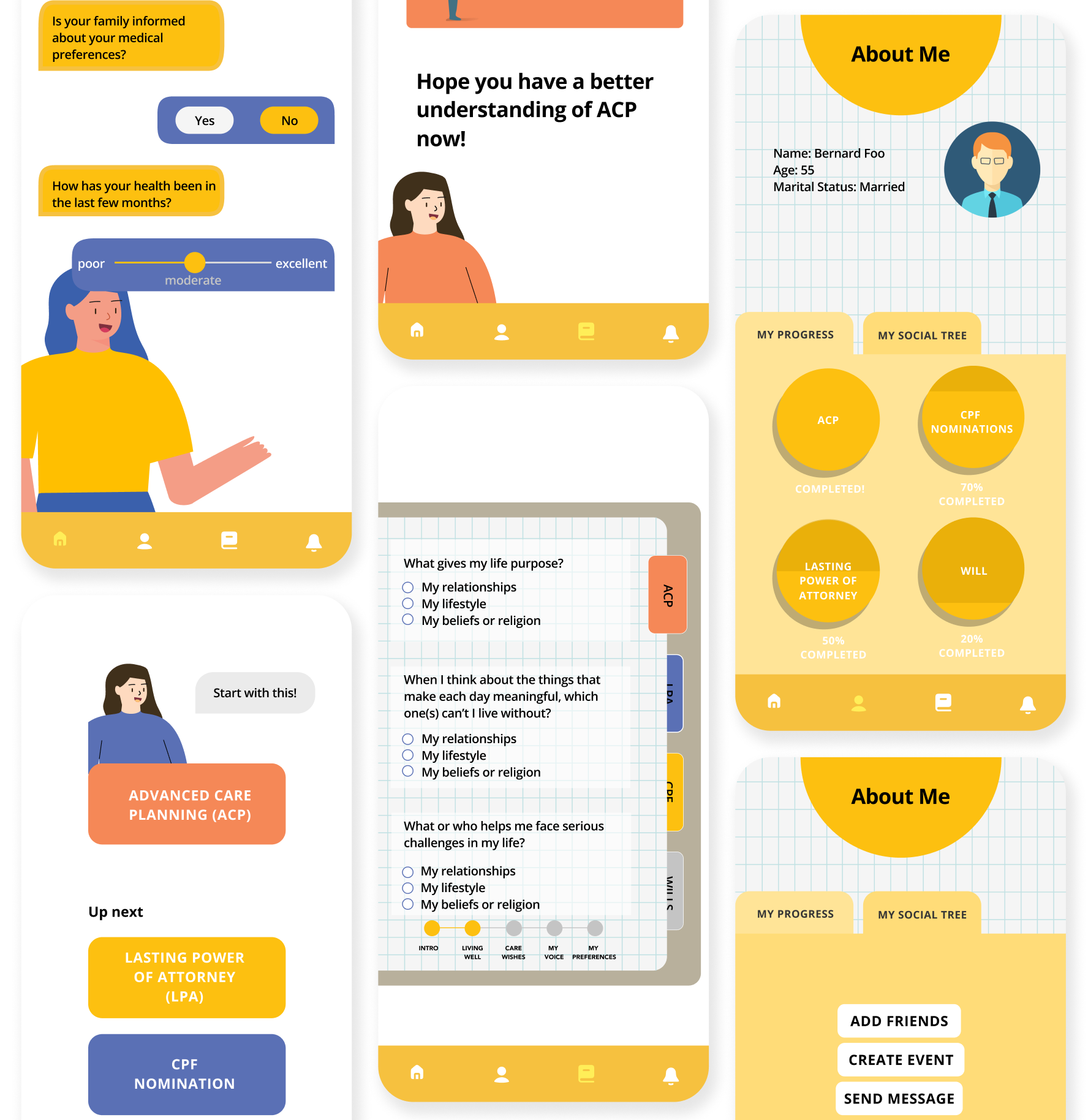

Unfold 04: Sharing with loved ones (Step 2)
Safe & Mentally in-sync: The Conversation Starter provides a safe, non-confrontational way to share major EOL decisions with loved ones. Users can simply circle their answers for each question, fill his family members' name and place the detached piece in a common space like the fridge.
The casual, non-confrontational environment in which family members encounter the Conversation Starter allow them to reflect and thinking about the user's choices in a calm and safe space. She can check off her name as a form of acknowledgement.
Family members can also scan the QR code to view the user's online profile and accept their family request on the Loving Looks Like platform. The user will be notified of the acceptance, which can be taken as a green light to discuss their EOL decisions with their family.
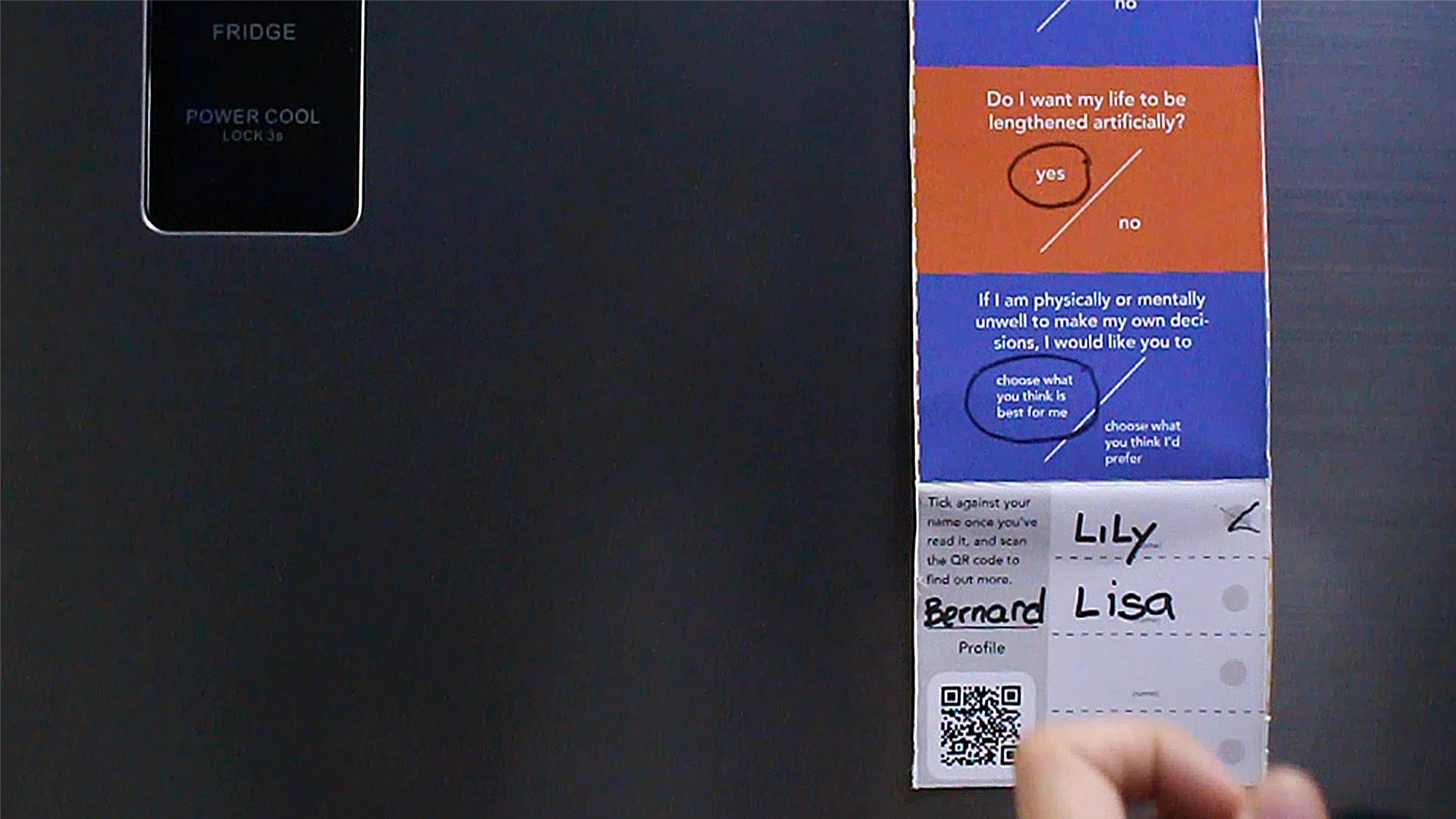

Unfold 05: Profile Card (Step 3)
Tyada
The detachable Information / Emergency Card allows for access during emergencies, as a physical reminder and for sharing with friends as a casual conversation piece.



The Loving Looks Like Project
With the Loving Looks Like Outreach pamphlet, Singaporeans can learn to appreciate and understand the importance of End-Of-Life planning for both themselves and their loved ones welfare. It incorporation with the online platform allows users to access all their EOL needs on one platform, to comfortably create, keep and share their end-of-life decisions with their loved ones in a safe space.
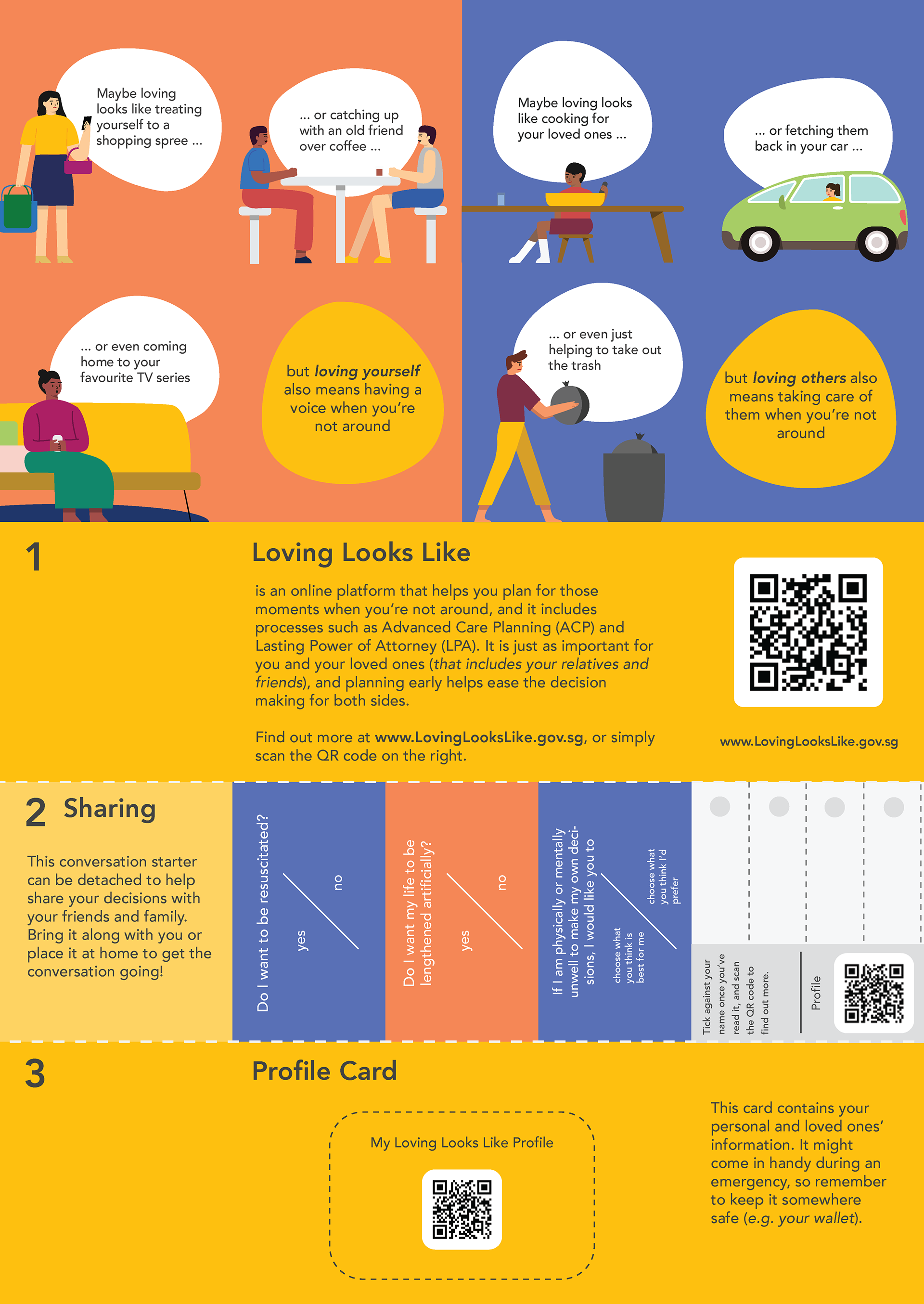

Video
Please enjoy this video which explains the concept of Loving Looks Like as well as feedback from GovTech Singapore.
Designed with Ashley Hwang & Deborah Loh
Supervised by Dr Jung-Joo Lee
WIth support from Jeffrey Fong
In collaboration with GovTech Singapore
